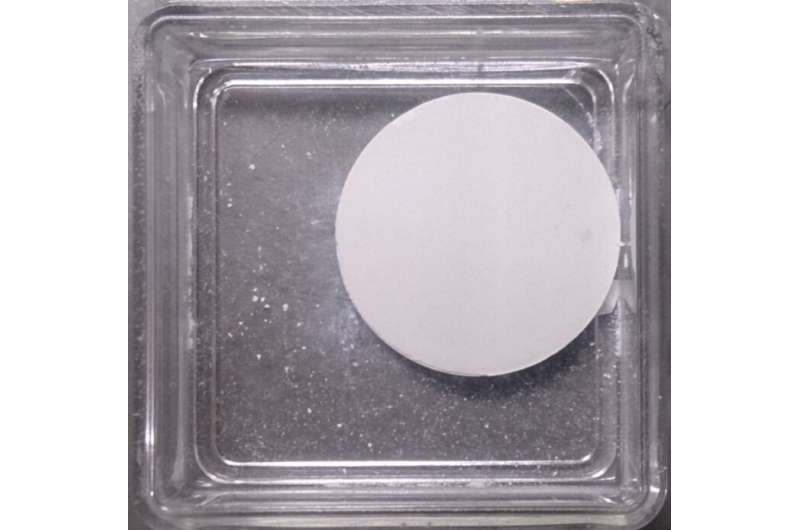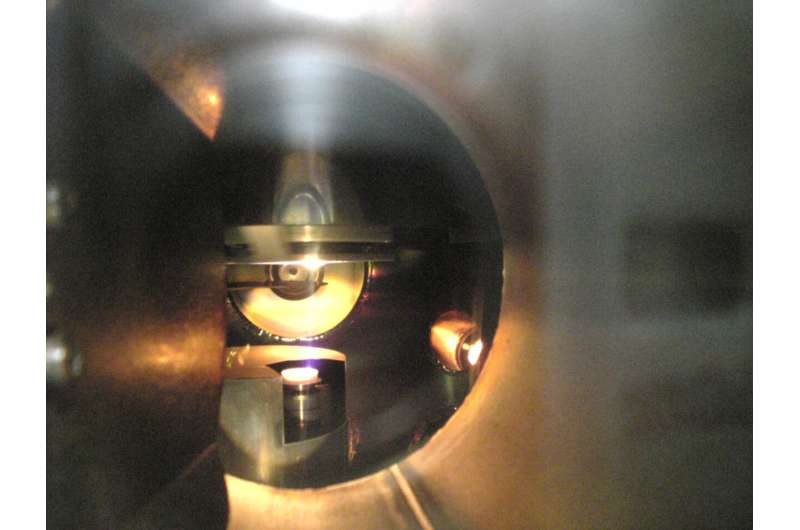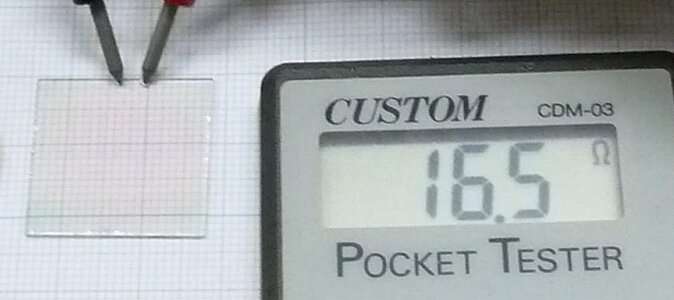The raw material used to make tin dioxide semiconductors. Credit: © 2020 Nakao et al.
Mobility is a key parameter for semiconductor performance and relates to how quickly and easily electrons can move inside a substance. Researchers have now achieved the highest mobility among thin films of tin dioxide ever reported. This high mobility could allow engineers to create thin and even transparent tin dioxide semiconductors for use in next-generation LED lights, photovoltaic solar panels or touch-sensitive display technologies.
Tin and oxygen can be combined in a certain way to become tin dioxide, a material that can be made into a semiconductor. Semiconductors are the basis of computer chips, solar panels and more. Since the 1960s, tin dioxide has found use in industrial applications including gas sensors and transparent electrodes for solar devices. The material is suitable for these things because of its high mobility. For most applications, higher is better. However, the high mobility of tin oxide was only possible in large bulk crystals, until now.
"We demonstrated the highest mobility in a thin film of tin oxide ever achieved. Improved mobility not only enhances the conductivity but also the transparency of the material," said Shoichiro Nakao, a researcher from the Department of Chemistry at the University of Tokyo. "Generally, transparency and conductivity cannot coexist in a material. Typical transparent materials such as glass or plastic are insulating, whereas conducting materials like metals are opaque. Few materials exhibit transparent conductivity—it's very interesting!"
A focused laser is used to create thin films of tin dioxide. Credit: © 2020 Nakao et al.
The more transparent a semiconductor is, the more light it can let through. Nakao and his team have made a tin oxide thin film that allows visible light and near-infrared light to pass. This is a great benefit to the power conversion efficiency of photovoltaic solar panels, but other uses could include enhanced touchscreen displays with even better accuracy and responsiveness, or more efficient LED lights.
The final tin dioxide thin film grown on glass to make efficient photovoltaics. Credit: © 2020 Nakao et al.
"Our method of production was key to creating a substance with these properties. We used a highly focused laser to evaporate pellets of pure tin dioxide and deposit or grow material exactly how we wanted it," said Nakao. "Such a process allows us to explore different growth conditions as well as how to incorporate additional substances. This means we can endow tin dioxide semiconductors with high mobility and useful functionality."
More information: Michitaka Fukumoto, Shoichiro Nakao, Kei Shigematsu, Daisuke Ogawa, Kazuo Morikawa, Yasushi Hirose, and Tetsuya Hasegawa. High mobility approaching the intrinsic limit in Ta-doped SnO2 films epitaxially grown on TiO2 (001) substrates. Scientific Reports. DOI: 10.1038/s41598-020-63800-3
Shoichiro Nakao et al. High Mobility Exceeding 80 cm2V-1s-1in Polycrystalline Ta-Doped SnO2Thin Films on Glass Using Anatase TiO2Seed Layers, Applied Physics Express (2010). DOI: 10.1143/APEX.3.031102
Journal information: Scientific Reports
Provided by University of Tokyo


























